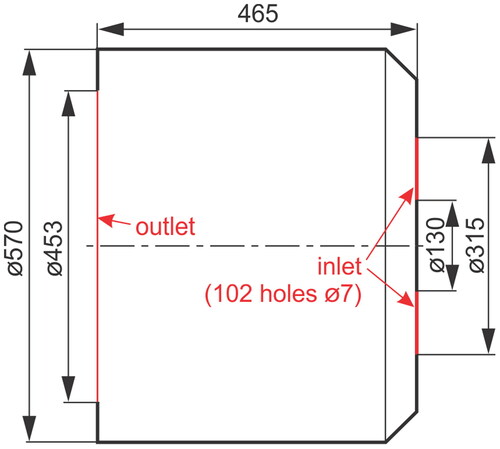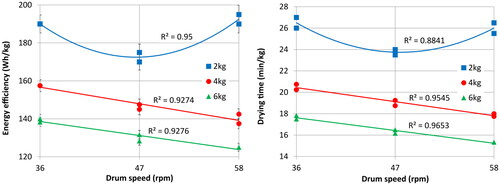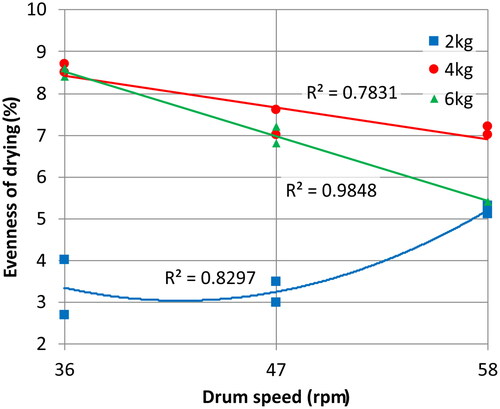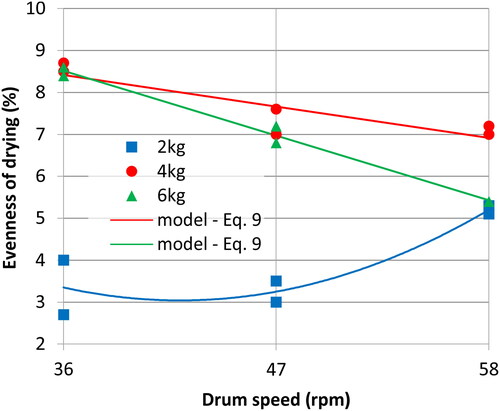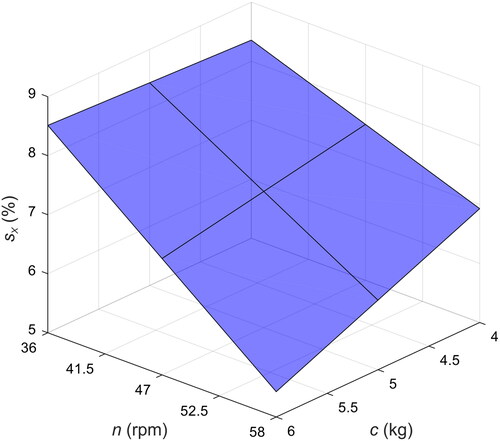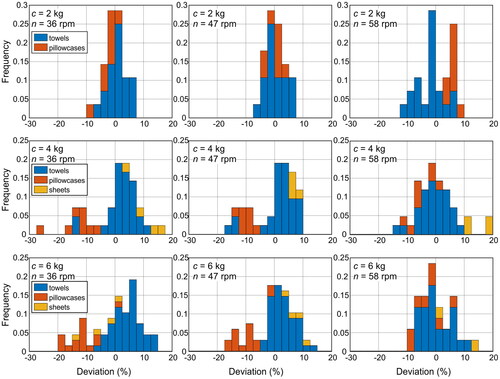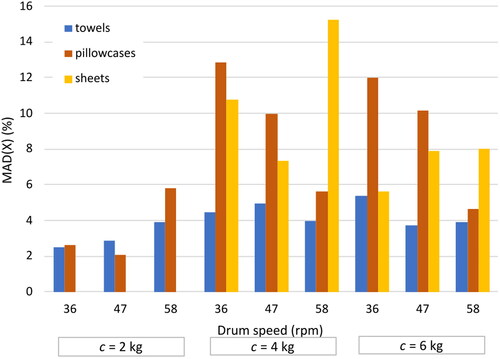Figures & data
Table 1. Fabric characteristics.
Table 2. Test load composition.
Figure 3. Variability of initial and final moisture content of each fabric item in the test run at 2 kg load and 58 rpm drum speed (T – towels, P – pillowcases, horizontal red line – nominal moisture contents for complete load).
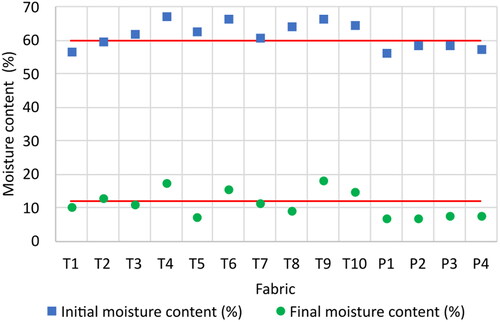
Table 3. Measured operating points.

